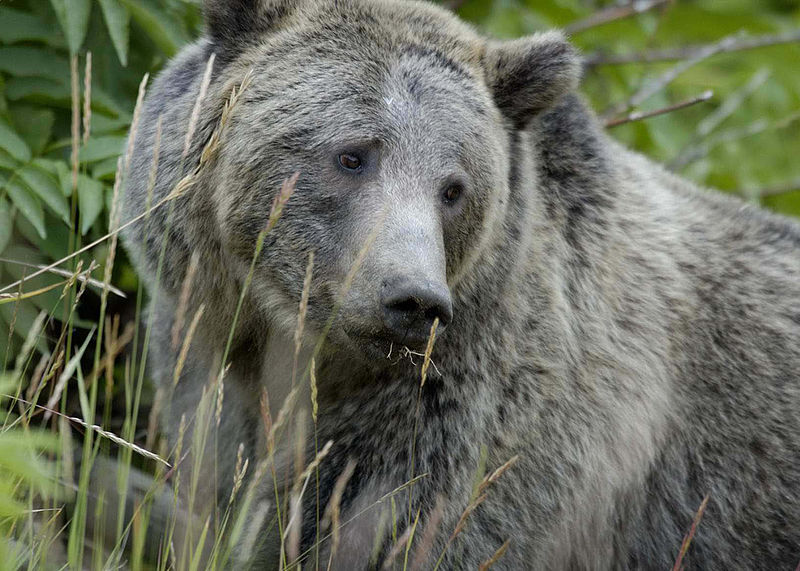

Even though every respectable regulatory service says shooting wolves in and around Yellowstone National Park is bad for everyone involved, wolves are still being shot. Well, add one more paper to the pile: a new study published in the Journal of Animal Ecology finds that the reintroduction of wolves to Yellowstone has had a positive effect on the population of…wait, what? Grizzly bears? How?
Putting together the puzzle pieces of a diverse ecosystem like Yellowstone is tricky; shooting wolves is like pulling out a piece of an enormous Jenga game. Some parts seem unaffected, some parts are distinctly less balanced, and eventually the whole game will crash. This study looks at how the wolf affects the ecosystem as a whole, and, as we thought, wolves are an essential part of the health of Yellowstone.
The iconic, endangered-in-the-U.S. grizzly bear relies on lots of fruit, especially berries, when preparing for its winter hibernation. High in sugar and containing lots of important vitamins, the berries, including serviceberry, chokecherry, buffaloberry, twinberry, huckleberry, and others, and make up a substantial portion of the grizzly’s diet in the summertime. A lower amount of berries has been found to have a negative effect on the survival and reproductive abilities of grizzlies the following year.
There have been quite a few low-berry years lately. That problem, says the study, can be attributed to the lack of wolves in Yellowstone: wolves typically prey on the abundant elk herds in the park. Elk eat berries, just like the bears do. But without wolves, the elk population has exploded, which means there’s hardly any berries left for the bears. So the bears aren’t as well fed, which makes them less healthy.
And it’s not even just as simple as that. The elk are eating so many berries, including the entire berry shrubs, that animals that rely on the shrubs, like bees and butterflies, are also in decline. The bears, without access to the fruit they’d normally be eating, have to eat more meat, which means they sometimes prey on elk, but just as often on livestock nearby. And that makes the ranchers angry, and the ranchers shoot bears or wolves or whatever else they feel like, because Wyoming does not know or care how ecosystems work. (Neither does Friends of the Yellowstone Elk Herd, a pro-hunting organization.)
But the reintroduction of wolves, the study finds, has had a marked improvement on that entire system. The researchers, from Oregon State University and Washington State University, analyzed grizzly bear scat and found that the percentage of berries in the scat has doubled since the reintroduction of the wolves. Turns out the two most iconic animals of Yellowstone depend on each other in more ways than we thought.
[via PhysOrg]
